
Chinese New Year 101
Chinese New Year began as a way of bringing the family together to honor household deities. Chinese New Year (other countries may refer to it as the Lunar New Year or Spring Festival) remains one of China’s most important holidays. Its focus has shifted beyond the household and into the community, and is a time for luck, food and family.
Taste of Home‘s Justin Young shares how his Chinese American family celebrates the new year. He advises, “Take everything in! Chinese New Year is more than just a night, it actually lasts 15 days and there are so many different things to do, traditions to follow and foods to eat.” Here’s how to celebrate Chinese New Year.
Don’t forget to serve lucky Chinese New Year foods during your celebration!
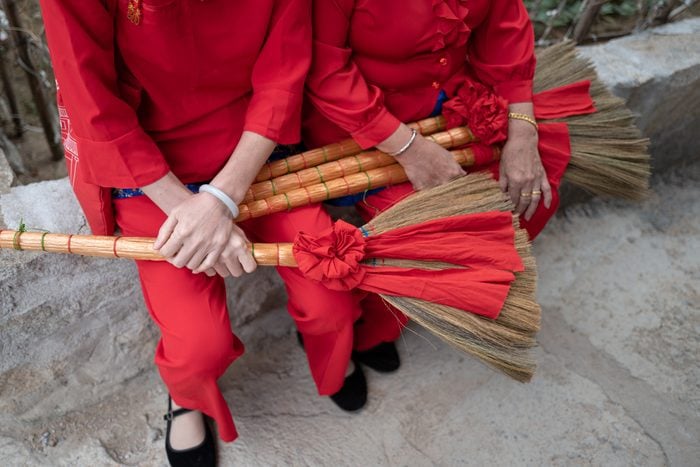
Sweep Away the Bad Luck
First things first. If you’re having a friend over, you’re likely going to tidy up first. But cleaning on Chinese New Year is about more than good hosting. It’s traditionally done to sweep away bad luck from the current year. Then, when guests arrive, ask them to remove their shoes at the door to encourage a clean and smooth transition into the new year.
Young tells us, “In my family, we all took part in getting the house cleaned and ready for the new year. However, I bet my mom would say she did most of the sweeping.”
Not a bad way to get started on your spring cleaning checklist, eh?
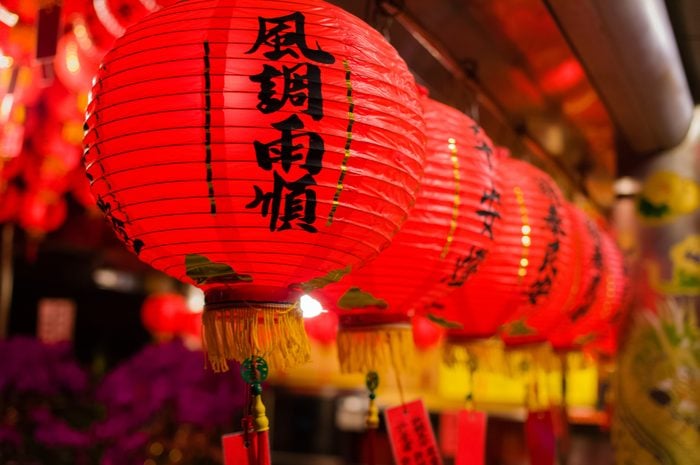
Decorate with the Color Red
A good party needs lively decorations. One Chinese New Year custom is to hang red paper decorations in windows, doors and around the house. It’s believed that this tradition derives from an ancient legend involving a beast called Nian (the name is a Chinese word for “year”), who was known to be terrified of the color red.
Red also symbolizes power, happiness and vitality, so you’ll want to use red wherever you can in your decor. For example, string up red paper lanterns, or place red flowers in vases all around the room. Red velvet cake, anyone? You can also set the mood with red signature cocktails, such as Pomegranate Cosmos, and mocktails such as a Raspberry Refresher.
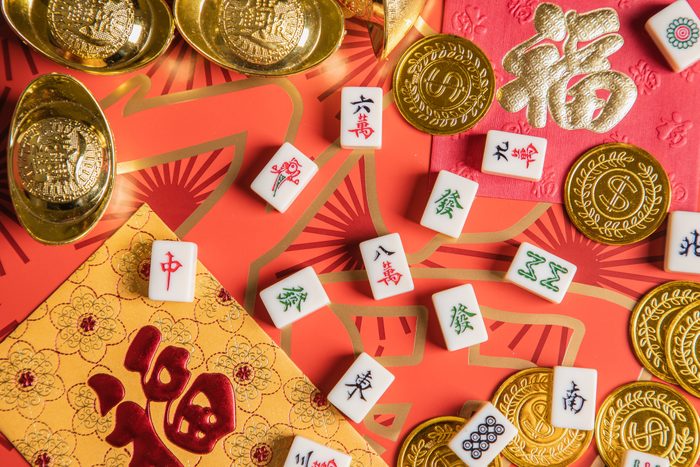
Add Gold Highlights
Although traditional Chinese New Year decor is red, it should be accented with gold. Gold represents wealth, good fortune and prosperity—all important themes for the new year. And who couldn’t use a little good fortune?
It’s also a Chinese New Year tradition to write messages wishing good luck, good fortune, wealth, prosperity and longevity to loved ones. Place those messages where people will find them. For an added lucky touch, write the messages in gold ink on red paper. You can even make your invitations red with gold writing (or at least send an email in red font.)
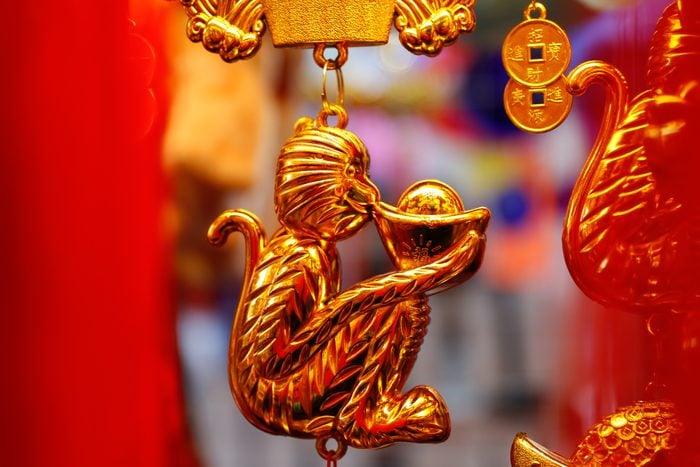
Listen to the Chinese Zodiac
Chinese tradition holds that every new year is imbued with the characteristics of one of the 12 animals in the Chinese zodiac: rat, ox, tiger, rabbit, dragon, snake, horse, sheep, monkey, rooster, dog and pig. It’s also a tradition to decorate the home with images of the incoming zodiac animal. This year we will be celebrating the year of the rabbit!
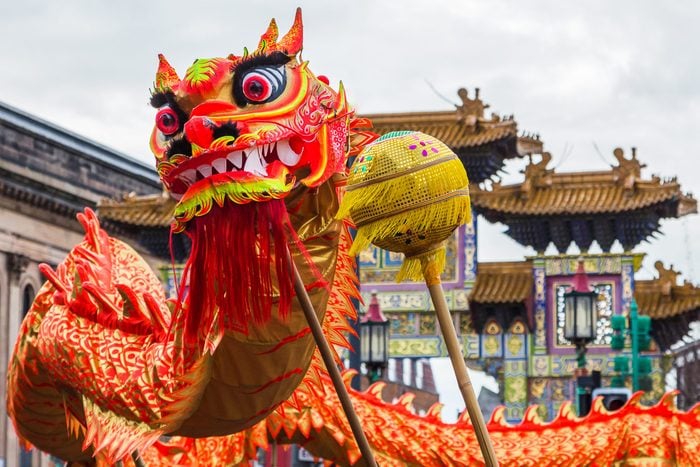
Include Dragons and Lions
The dragon is a beloved symbol for Chinese New Year—showcasing strength, goodness and good luck as well as supernatural forces—so you’ll want to include dragons in the party decorations. For example, you can stretch a long red dragon garland along the ceiling or a wall.
As for lions, they celebrate strength, stability and superiority for the Chinese New Year. Young tells us, “My favorite memories of Chinese New Year are when I used to participate in lion dance performances throughout my New York Chinatown community. I was part of an organization called the Wan Chi Ming Hung Gar Institute and we would parade around Chinatown to give the community and businesses good luck for the new year.”
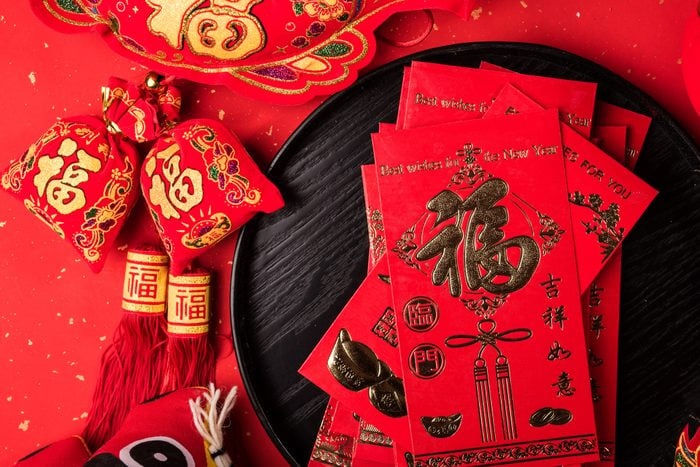
Exchange Red Envelopes for Good Fortune
Another Chinese New Year tradition is the exchanging of gifts in a very specific way: small red envelopes filled with “lucky money.” The envelopes symbolize the giving of good fortune.
You could provide envelopes for guests to give to one another, or you can give them out yourself. If you want to switch up the idea of lucky money envelopes, give out little red goody bags and fill them with homemade candy for a sweet year!
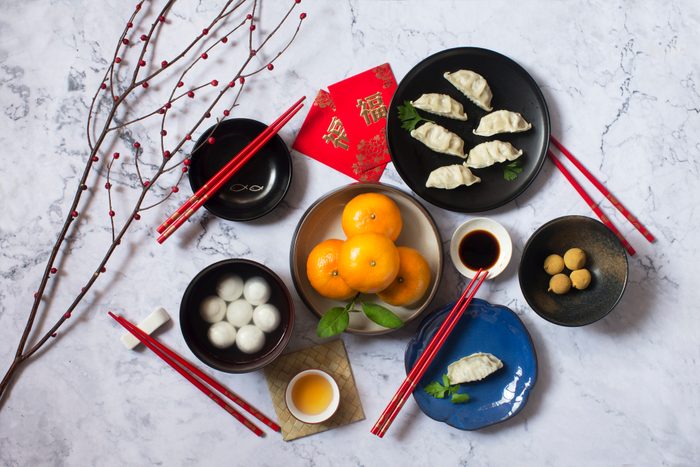
Serve Traditional Chinese Foods
Young says, “It’s not a Chinese New Year party without food. Food is such a big part of the celebration!” Historically, the Chinese New Year celebration would last for 15 days, and certain foods would be eaten at certain days and times. For example, in the first five days of the new year, people ate long noodles (symbolizing long life). On the 15th day, people ate dumplings shaped like the full moon, symbolizing family and perfection. Invoke these traditions at your own party by serving Chicken Stir-Fry with Noodles and Asian Chicken Dumplings.
“My favorite custom is getting together with family around a big banquet dinner. The food is endless and there are so many yummy things to eat,” Young says. His parents would make or buy little cakes called fat goh, or wealth cakes. “My parents would steam them in the morning of Chinese New Year,” he says, “so my first meal would be good luck and blessed.”
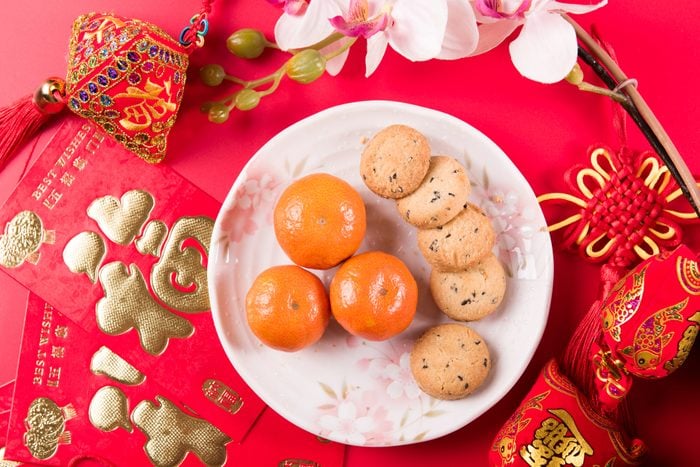
Don’t Forget Dessert
For dessert, be sure to incorporate oranges and tangerines, which represent wealth, luck and happiness. And don’t forget the fortune cookies! Make them yourself, or order a set with custom fortunes to surprise family and friends.
Another sweet treat for the Chinese New Year? Whip up a batch of homemade Chinese Almond Cookies or buy store-bought almond cookies. Bonus points for serving them with red and gold dragon napkins.

End the Night with Fireworks
It’s been said that no Chinese New Year celebration is truly complete without fireworks, because the terrifying beast Nian is terrified of the light and noise. Also, the noise wakes up a magical dragon who will fly across the sky to bring spring rain for abundant crops. If you do decide to go with the fireworks tradition, please be sure to hire a trained professional to get it off the ground, so to speak, safely. Happy Chinese New Year!